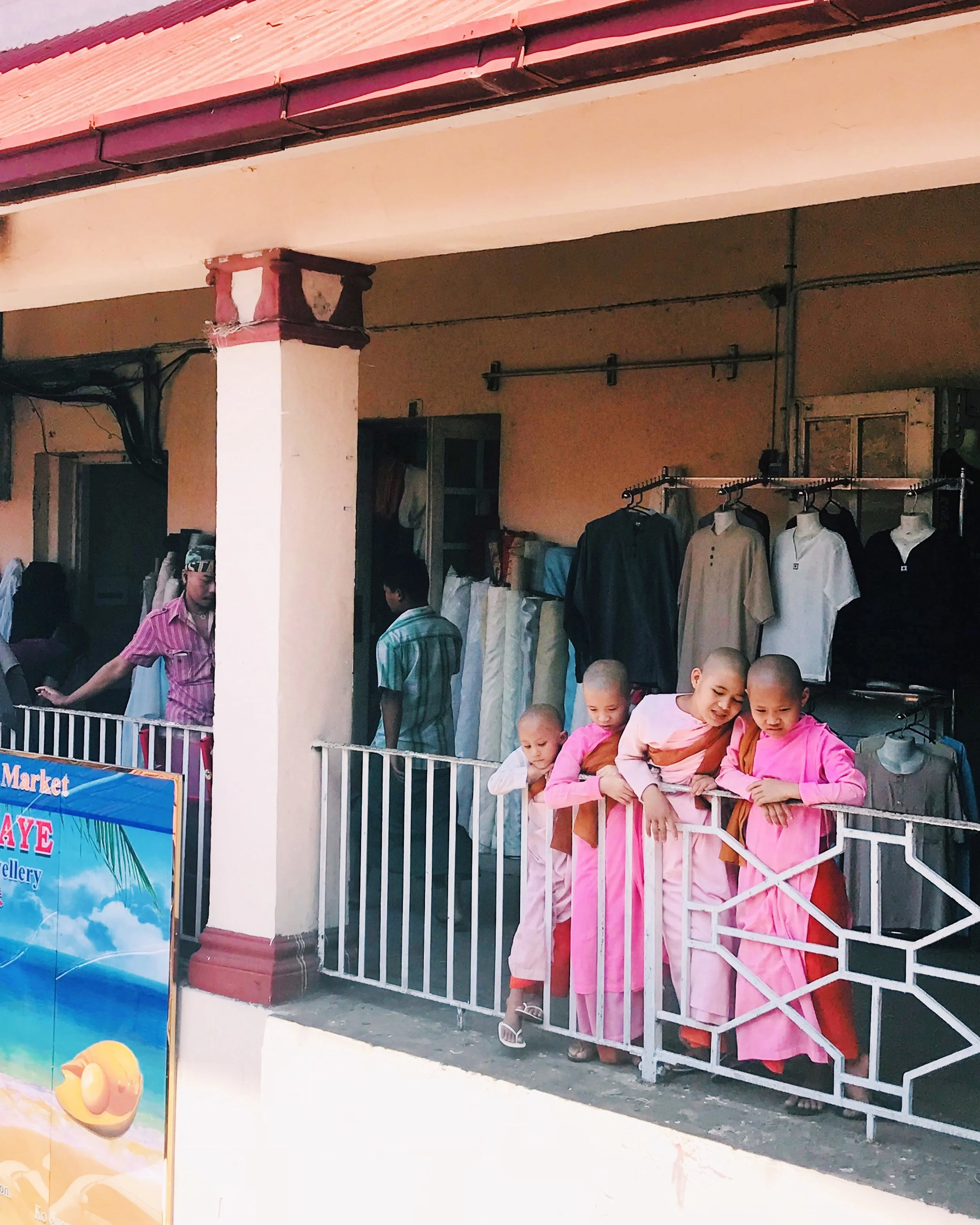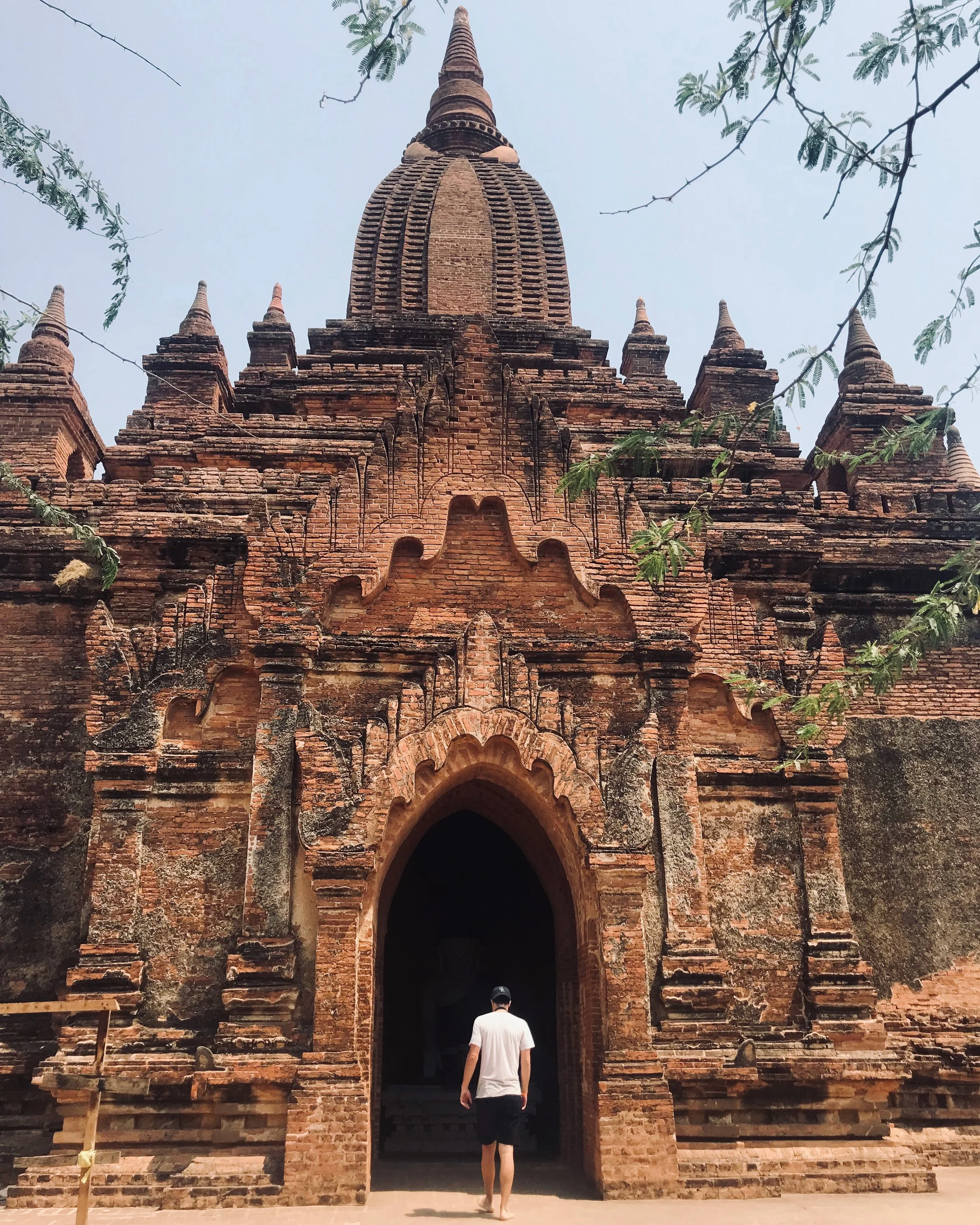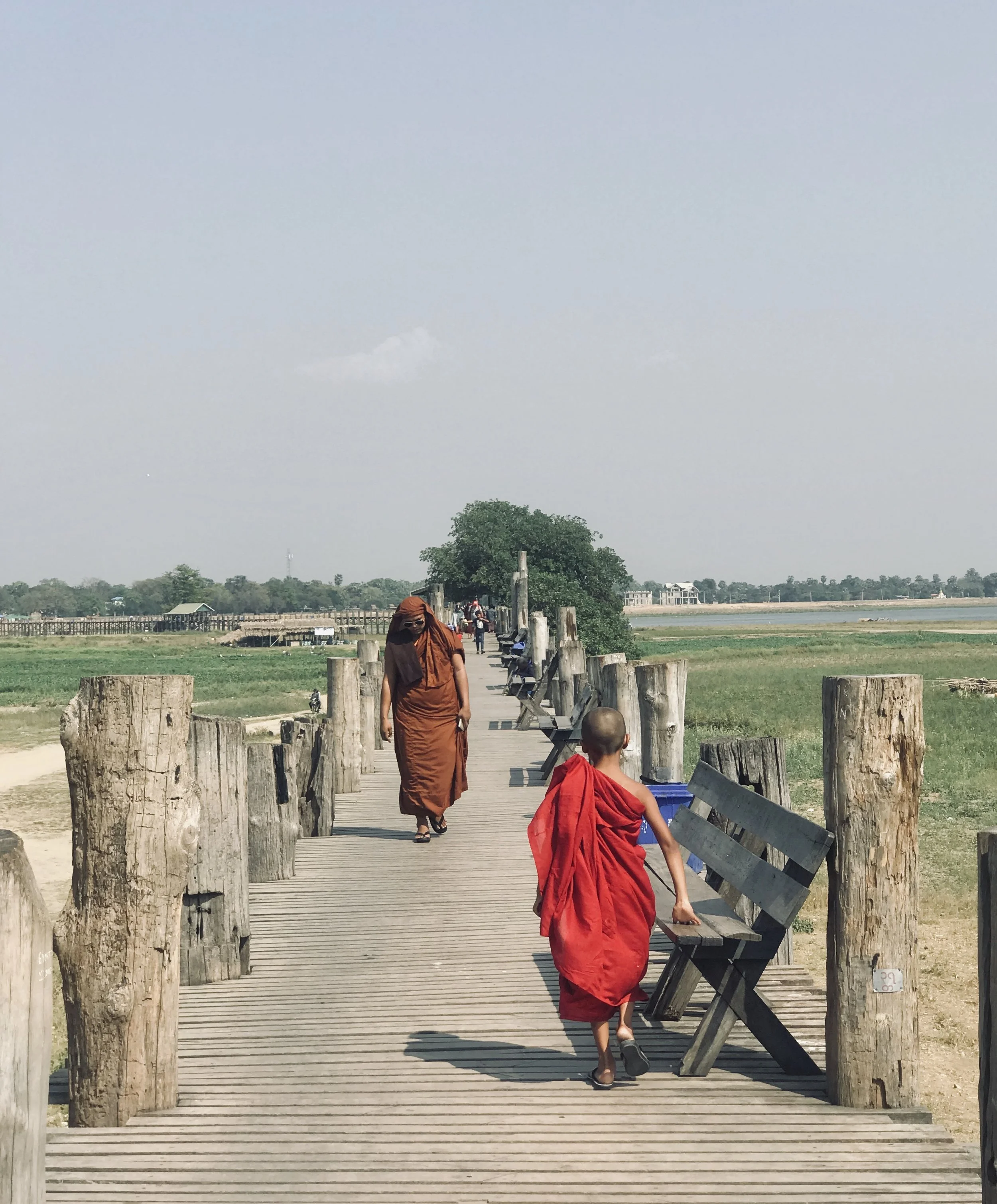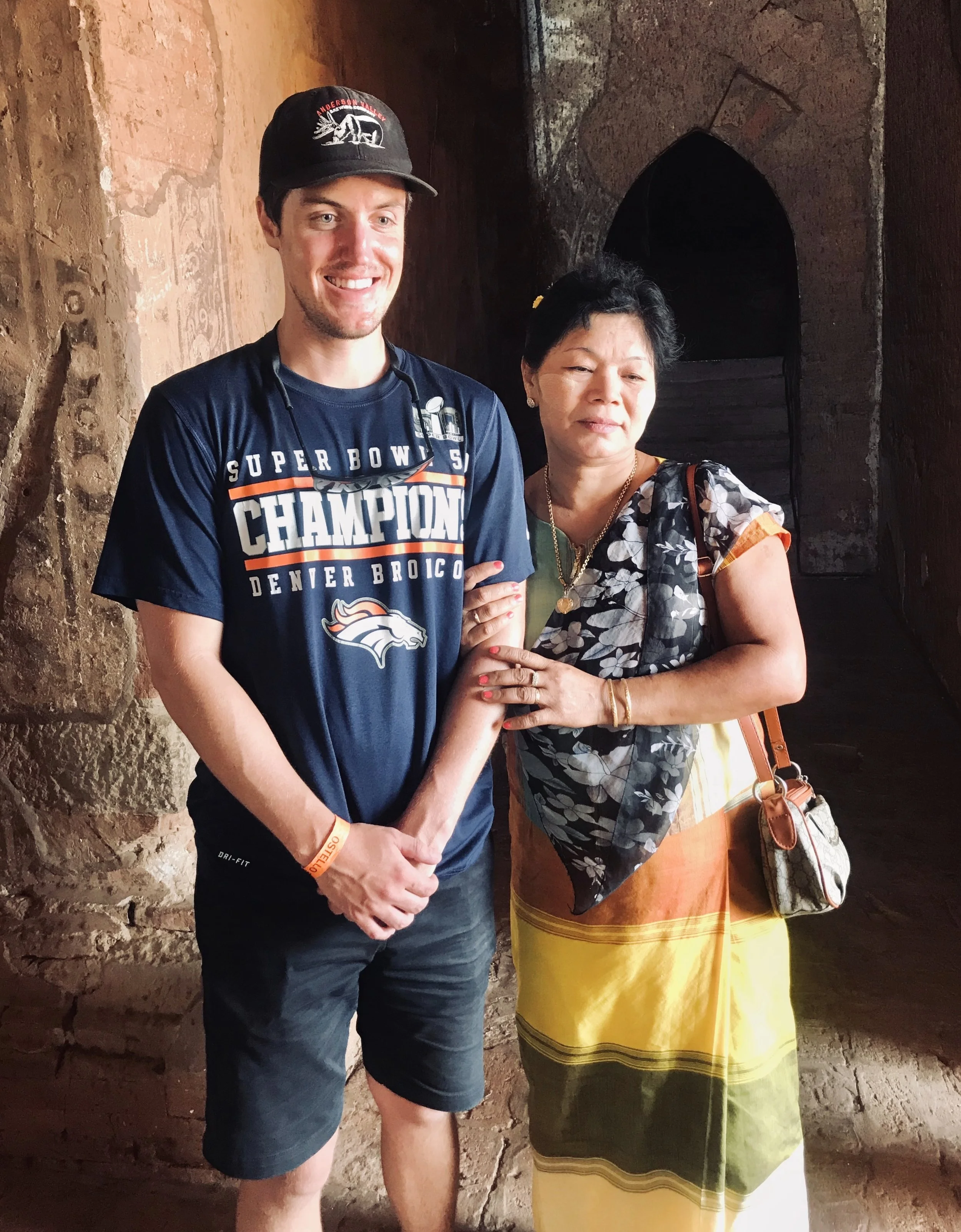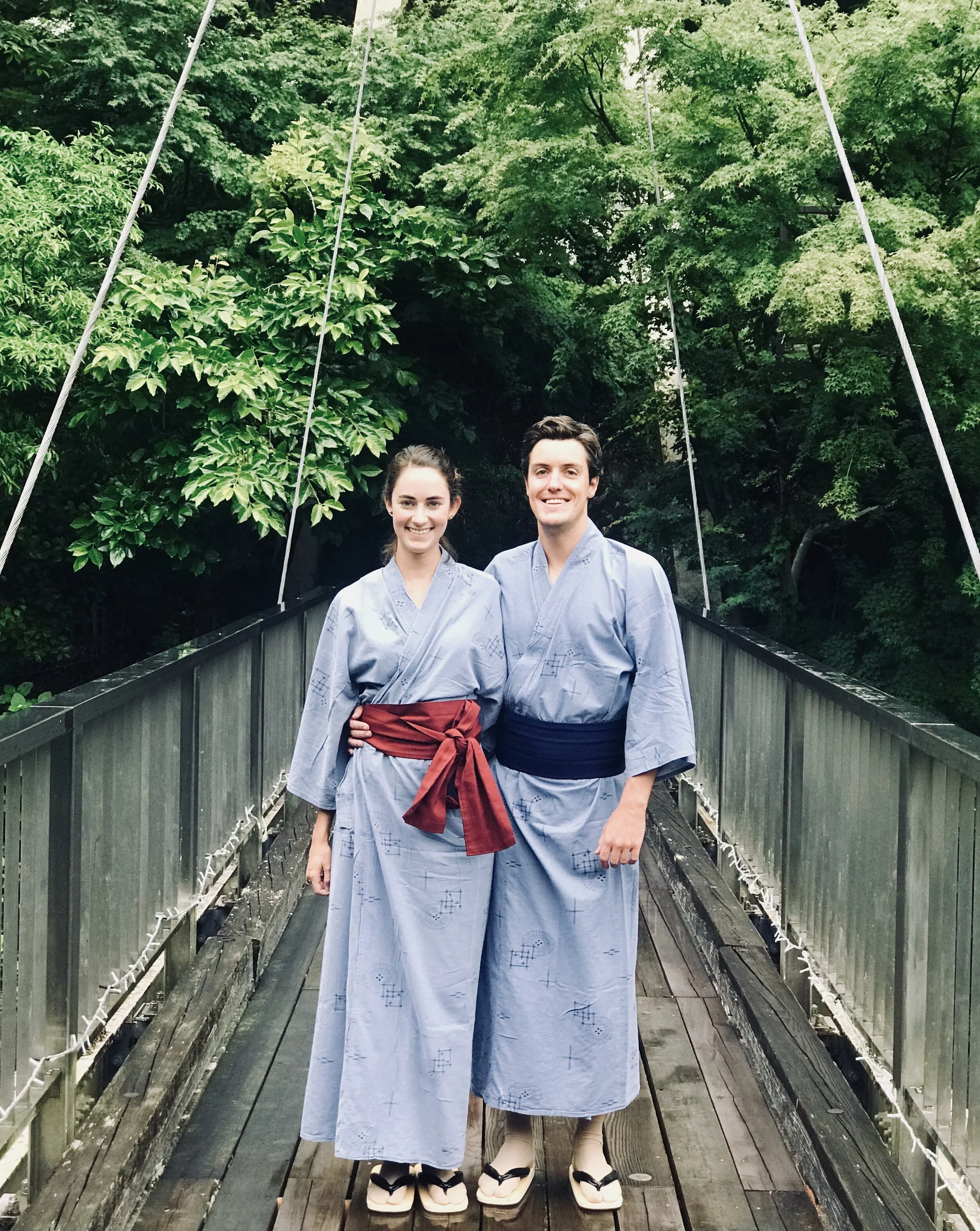10 Things To Know Before Traveling to Myanmar
If you read our 10-day Myanmar itinerary, you already know this country was one of the most enchanting travel experiences we’ve ever had. Myanmar was our first time taking the road slightly less traveled, going entire days without encountering another tourist, celebrating a local festival, and seeing the vast templed landscape of Bagan that we first fell in love with from movies and photos.
We also learned so many interesting facts about Burmese culture that we would never have understood without visiting. Here’s our top 10.
1. The temples in Bagan are governed by an evolving set of regulations.
In the years leading up to our trip, most of them were left wide open — climbable for any tourist who could find a safe (or often not so safe) way to the top. Then came several tourist deaths — terrible falls from crumbling, 1,000-year-old structures with no adequate hospitals nearby. By the time we went in April 2018, tourists weren’t technically permitted to climb any of the 2,000+ remaining pagodas, temples, and stupas. Many of them had been barred and locked. However, it was still pretty easy, if not even more fun because you had to make a concerted effort to find the large temples that were still climbable, making if feel all the more like an Indiana Jones adventure. As of this month, Bagan was finally added to the list of UNESCO World Heritage sites, nearly 25 years after being nominated. This means that the site will be legally protected and conserved by international treaties, but we’re not yet sure what it means for tourists’ ability to climb temples. We’d expect access to be more restricted to maintain conservation efforts in the near future.
Nothing like having an entire field of these giant temples to yourself — no one inside except sometimes a friendly stray dog.
2. Myanmar is considered the most religious Buddhist country, with Buddhism practiced by 90% of the population.
This is most visible in the sheer quantity of monks in their saffron or rust-colored robes and nuns in their pink robes seen almost everywhere you go. As is common practice, all children spend at least a couple weeks in the monasteries learning the teachings of the Buddha, but many families choose for their children to stay for extended periods because monasteries provide free room, board, and education.
Monks big and small at U-Bein Bridge.
3. Myanmar is desperate to catch up to its neighboring countries when it comes to tourism, and you can feel that on a personal level.
Almost everywhere we went, there seemed to be a collective effort to make sure tourists had a positive experience to the point where they’d go home and spread the good word about Myanmar. This came in the form of questions like “Are you happy here?” “Would you return to Myanmar?” and considering we visited during the hottest month of the year (April), “Is it too hot for you here?” We also heard a lot of praise for the U.S. and Obama because he was the first U.S. President to visit Myanmar when he lifted sanctions against the country in 2016. All the locals love him, and failed to even mention that he’s not President anymore.
We also encountered a darker side to this desperate need for tourist revenue. It’s often easiest to book drivers and tours directly through your hotel, but as we discovered, some hotels are government owned and thus less of that income is trickling down to local residents. We literally got bitched out on the streets of Mandalay for booking an all-day tour via our hotel rather than searching outside for a driver. We’re glad we gained this understanding, but still don’t believe this is a black or white issue. We like to support local business wherever possible, but at the same time we expect understanding that tourists will most often go for the easiest, most organized, and most trustworthy looking option when deciding where to spend their travel budgets.
4. Burmese fashion and culture is a dichotomy for the ages.
Most men, young and old alike, wear longyis (like a sarong) and chew betel nut — an extremely addictive stimulant that helps them stay awake during long hours of driving and other work, and turns their spit and eventually their teeth red.
Most women and plenty of men wear thanaka, a traditional yellow tree bark paste worn in decorative patterns on the face for sunscreen, skin treatment, and style.
In light of the more traditional customs, the Burmese trend that fascinated us the most was the burgeoning underground punk scene. A generous subset of young Burmese people — mostly boys / men from what we saw — wear their hair dyed in bright colors and swooped across the face, complete with skinny jeans, athleisure, leather, camo, flannel, knockoff Yeezy apparel, etc. There’s a definite underground music scene going on as well, which we unfortunately didn’t get the chance to partake in while we were in Yangon.
Fashion exhibit A.
Aaaaand exhibit B. Hope that IG photo got him all the likes.
5. They drive on the right-hand side of the road, but also have European cars with the steering wheel on the right…
This is because Myanmar spent over 100 years under British colonial rule and always drove on the left...until one day in 1970 when the Prime Minister told them to switch, for no apparent reason. Some of the roads and traffic circles in Yangon seem better designed for left-hand driving, and needless to say we were often confused about the traffic patterns.
6. Water Festival / Thingyan / New Year celebrations are NO JOKE!
Thingyan will definitely get its own post, but we’ll just say that we’ve now experienced being vigorously hosed in the face dozens of times while trying not to fall off a motorbike, and have gotten stuck in a massive water fight / concert / party for over an hour unable to drive for more than a couple inches at a time.
7. We’ve never taken so many selfies with locals.
Because we visited during a local holiday, people were on vacation from school and work and many more rural locals take the opportunity to visit the ancient city of Bagan. Thingyan brings in local tourists who have never seen an international tourist before and aren’t likely to again, leading to many selfies between us and entire families. We just wonder where all these photos end up?
Sam almost had to tell this lady to back up off her man.
8. Transportation infrastructure is there, but booking travel can be a whole new process.
No longer is Myanmar stuck in the days of treacherously turbulent train travel (we’ve all seen that Bourdain episode right?). There are plenty of options for domestic flights and convenient, albeit lengthy, bus trips to get across the country. However, at the time we visited, none of these options were pre-bookable. This is consistent with most of SE Asia when it comes to ground transportation, but we had never experienced a situation where flights weren’t bookable online. Luckily, your hotel or hostel should be super easy to work with when it comes to arranging transportation. We messaged our hostel in Yangon before we arrived, and the super helpful owner gave us flight options and prices to Bagan and helped us reserve our seats. We simply paid him upon arrival! We booked all bus trips at our hostels and hotels the day we arrived at each one.
9. USD are accepted, but only if they’re in *MINT* condition.
The Burmese government has changed hands and abruptly changed the currency so many times over the decades — effectively wiping out people’s life savings — that Burmese citizens began hoarding stable currency (the USD) as a makeshift savings. Burmese banks will accept USD, but only in absolute mint condition — literally not even the slightest fold. Any tears or marks are a 100% no-go. Years ago before Myanmar had ATMs, travelers would have to fly in with perfect bills on hand to last them the duration of their time there. This is no longer the case — it’s easy to withdraw Burmese kyat — but perfect bills are still a novelty. We even had locals offer to trade us their slightly marred USD for kyat, because the damaged bill would be rejected there and accepted back in the U.S. We were always happy to make the trade!
10. The complicated ethics of travel boycotts.
In Myanmar, border violence and human rights abuses against the Rohingya population have been going on for nearly 50 years, but only recently began receiving international attention. Following coverage of the issue, Myanmar has experienced a drastic decrease in tourism. While some travelers fear for their own safety, others take an ethical stance, boycotting travel to countries with human rights violations so as not to pour more money into a corrupt government regime.
To be completely honest, we didn’t give much consideration to either viewpoint before we decided to go. We knew fellow travelers who had visited recently, and were armed with the knowledge that the border issues existed far from the areas we’d be visiting. While there, we did have the chance to learn and see firsthand just how much travel boycotts can impact the local population. In a country where much of the population works in the travel and service industry, a sudden dramatic reduction in tourists can result in unexpected and difficult consequences at the individual and family level.
From our viewpoint, as long as you make an effort to support local businesses and vendors when you travel rather than state-run organizations (which we did unknowingly fail to do in Mandalay by staying at a government-owned hotel), your dollars are directly benefiting the citizens rather than the government.
The ethics of travel should be taken on a case by case basis, and we’re actively working towards better researching the political, economic, and cultural climate of each destination in advance so we can travel with even more strategies for supporting the local population vs. pouring dollars into varying degrees of corrupt governments.
What do you want to know about Myanmar, or what additional insights did you gain on your own visit? Leave us a comment here or on our latest IG post!
Happy travels!


